Modern Rodding TECH
InTheGarageMedia.com

 Photography by Charlie Matus
Photography by Charlie Matusuilding a successful custom car comes down to knowing when you’re done. It is often an exercise in restraint to achieve that perfect look. Several common approaches include the full radical custom that just screams “look at me” with extreme modifications. The mild custom could be as simple as nosing, decking, lowering, and a taillight swap. And then there is our personal favorite: the restyled car. Rodding and restyling go hand in hand (remember that old magazine?) and the restyled car has modifications that enhance the original lines of the car. Many of these modifications are quite complicated and yet when completed they often appear simple. We may look at a radical custom, but we take the time to study a restyled car.
Charlie Matus has been at this rod and custom game for a long while and if the name sounds familiar you may remember his “M&M Special” ’27 T roadster from the 2014 Grand National Roadster Show. Over the years Matus has developed a great eye, so it is no small wonder his current restyled ’51 Chevrolet hardtop project is a car worth studying. Matus and Dave May at Genesis Fabrication conspired on the new look for the car, and after talking with Matus we decided to let him tell the story of this wildly mild custom:
“I bought the car from a friend in 2016. It was running a Chevy crate 350/350 tranny, it was lowered and rolling on American five-spoke wheels. The white top over Seafoam Green body looked excellent. Nevertheless, I had a different plan for the Chevy.
“As soon as I bought the car, we began the dismantling process. In late October we media blasted the body only to find the “excellent body” was riddled with rust under the doors and behind the stock stainless gravel guards. We also found four bullet holes in the trunk and top. The unknown bodyman was a true ‘mud master’ with Bondo as none of these defects were evident with paint on the car.
“The car is being built by Dave May at Genesis Fabrication in Galt, California. [May] also built my ‘M&M Special’ ’27 roadster back in 2014. We decided a custom chassis was in order, using Chris Alston’s Chassisworks suspension parts on the Genesis-built frame. A completely new floor was fabricated from the trunk to the firewall. We decided the car would be a unibody-type car with a full frame but with the body welded to the frame. Chassisworks’ independent front suspension was used along with their rear suspension. Wilwood supplied the 13-inch rotors and four-piston calipers for all four corners. An extensive use of box tubing crossmembers ensure there will be no flexing. For go-power I decided on a stock LS3 Chevy engine with a 4L65E transmission. This choice was made for reliability and for long-distance capabilities. With the chassis complete, the entire car was welded to the frame structure. At this point the bodywork began. First, all rust areas were removed and replaced with new metal, this time the bodywork was being done by a metal master.
“All four wheelwells were reshaped to perfectly center the wheels in the openings. Next came more custom touches, including pie cutting the hood to lower the profile and installing ’55 Oldsmobile headlights. The front and rear bumpers were tucked into the body while the panel under the decklid was replaced and reshaped for the frenched license plate. We plan to have the left taillight swing out electronically to access a custom gas filler.
“Next came the remodeling of the interior with four bucket seats and a full-length center console. The front seats are from a Chevy Tahoe while the rear seats were custom fabricated to fit the available space. The original dash was replaced with a custom unit. First the dash location was extended 3 inches into the passenger compartment to provide space for the Vintage Air unit, several computers, the Dakota Digital instrument pod, and the wiper motor. Keeping the new firewall clean meant the Wilwood master cylinder and the Flaming River electrical power steering unit were also located under the new dashboard. Cosmetically the top of the new dash mirrors the shape of the original, but below the top line it is designed to accommodate the new gauges, A/C outlets, and the grab bar, while connecting to the waterfall portion of the center console. [May] modified a set of ’55 Chevy power window parts to move the all-new tinted glass. A one-piece Olds windshield replaces the original two-piece windshield.
“As you can see, we are still in the building stages. I have really enjoyed collaborating with [May] about all the custom touches. Plans are being made for custom side trim, some custom pans, and myriad details throughout the car.”
Thanks Charlie, we couldn’t have said it better ourselves. We look forward to bringing our readers the finished feature right here on the pages of Modern Rodding.
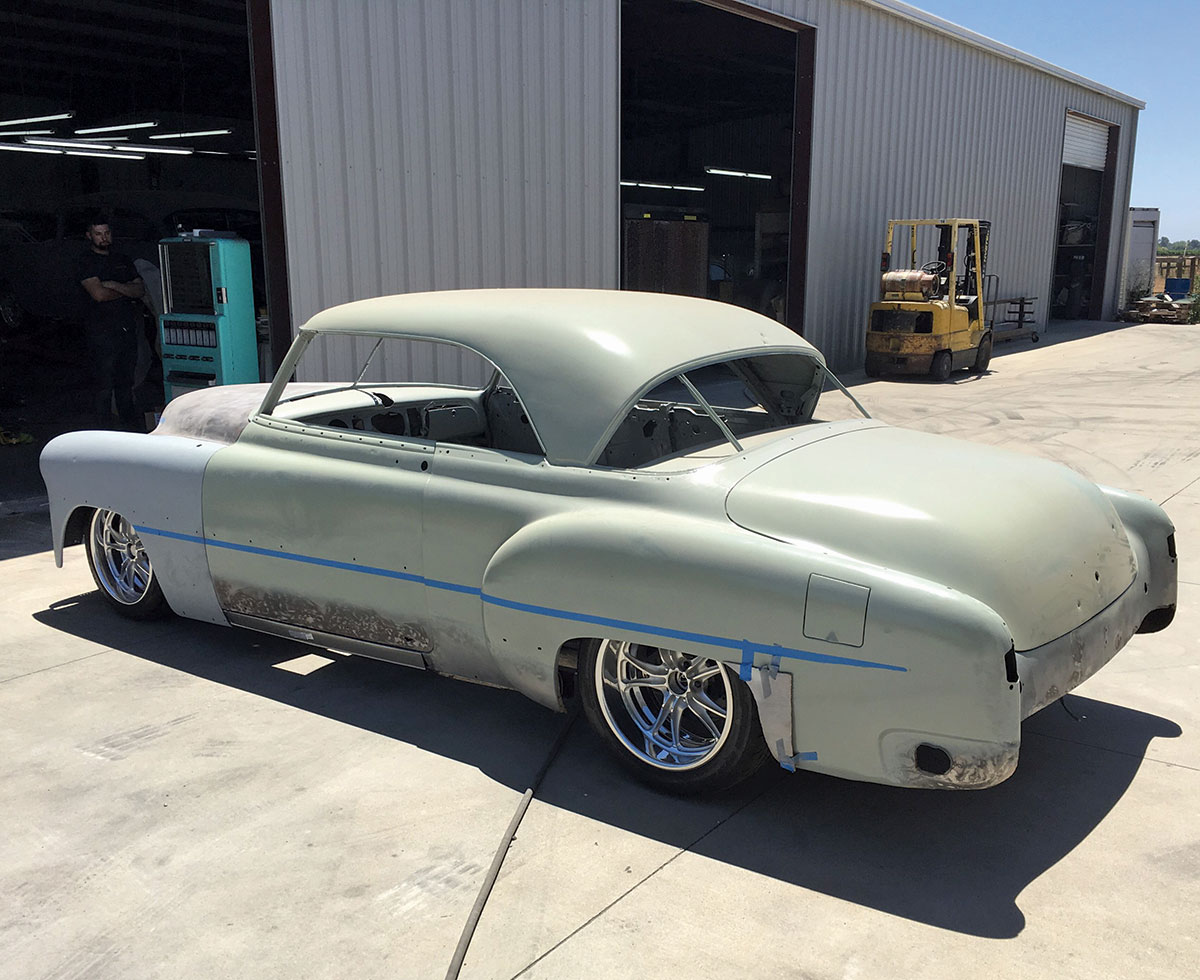
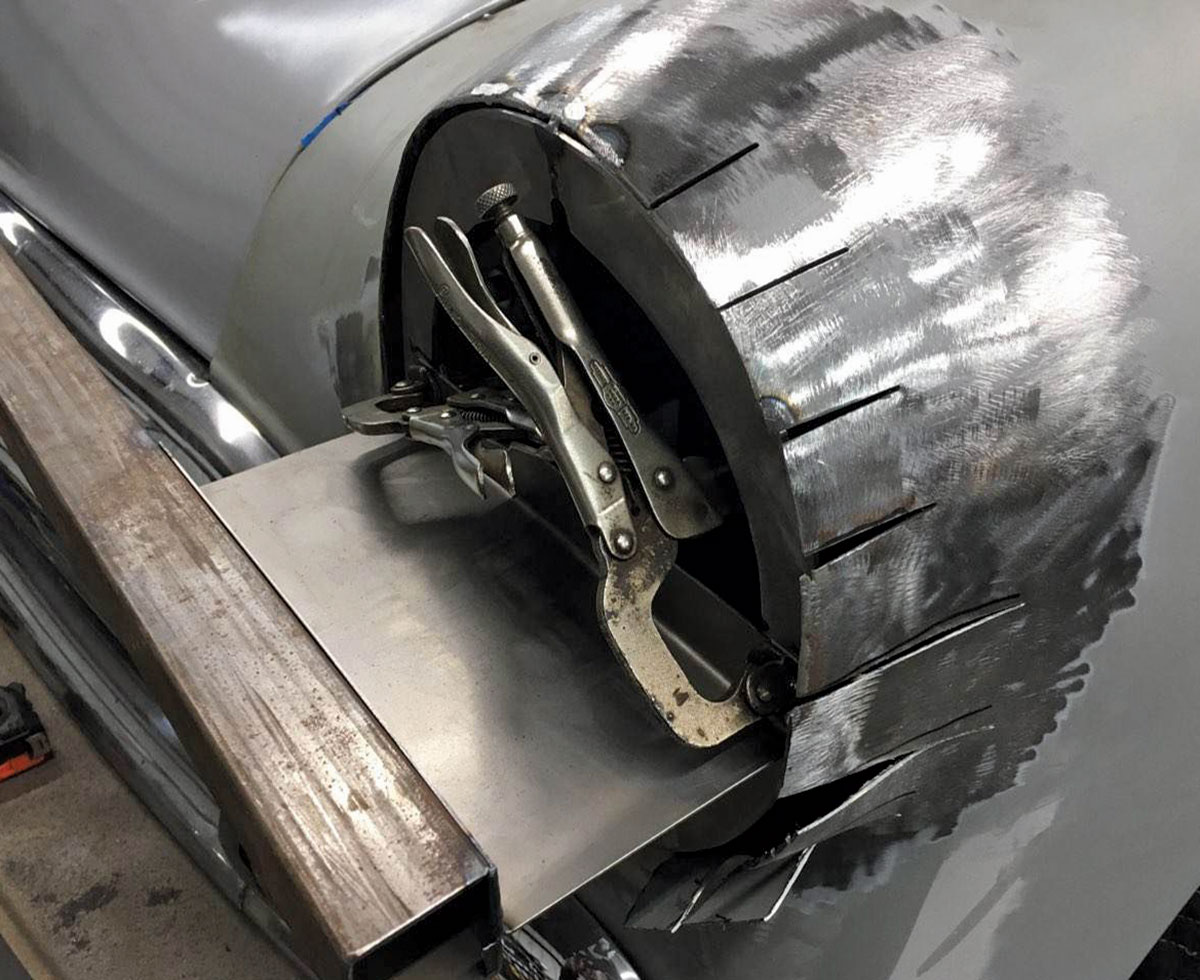

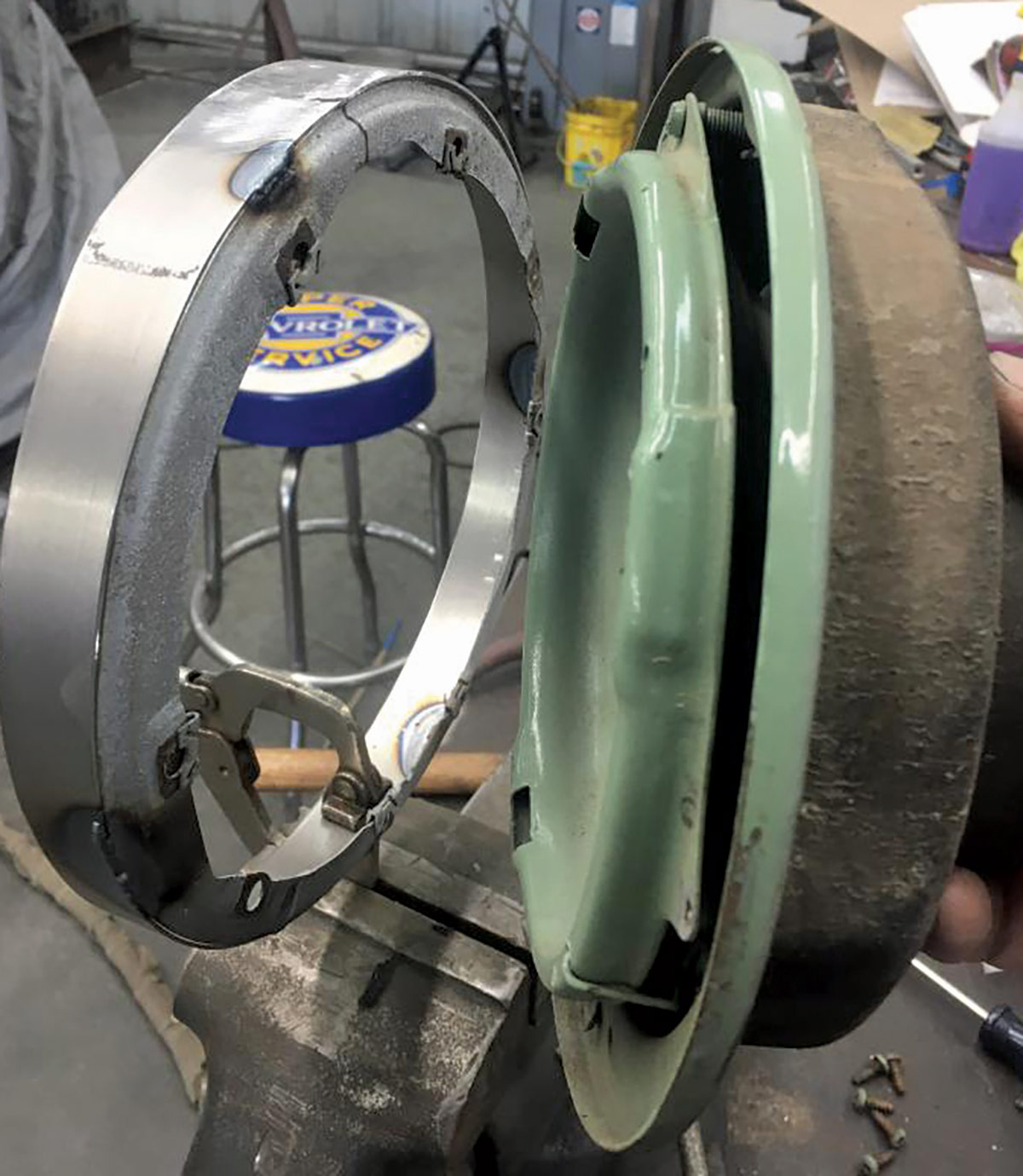
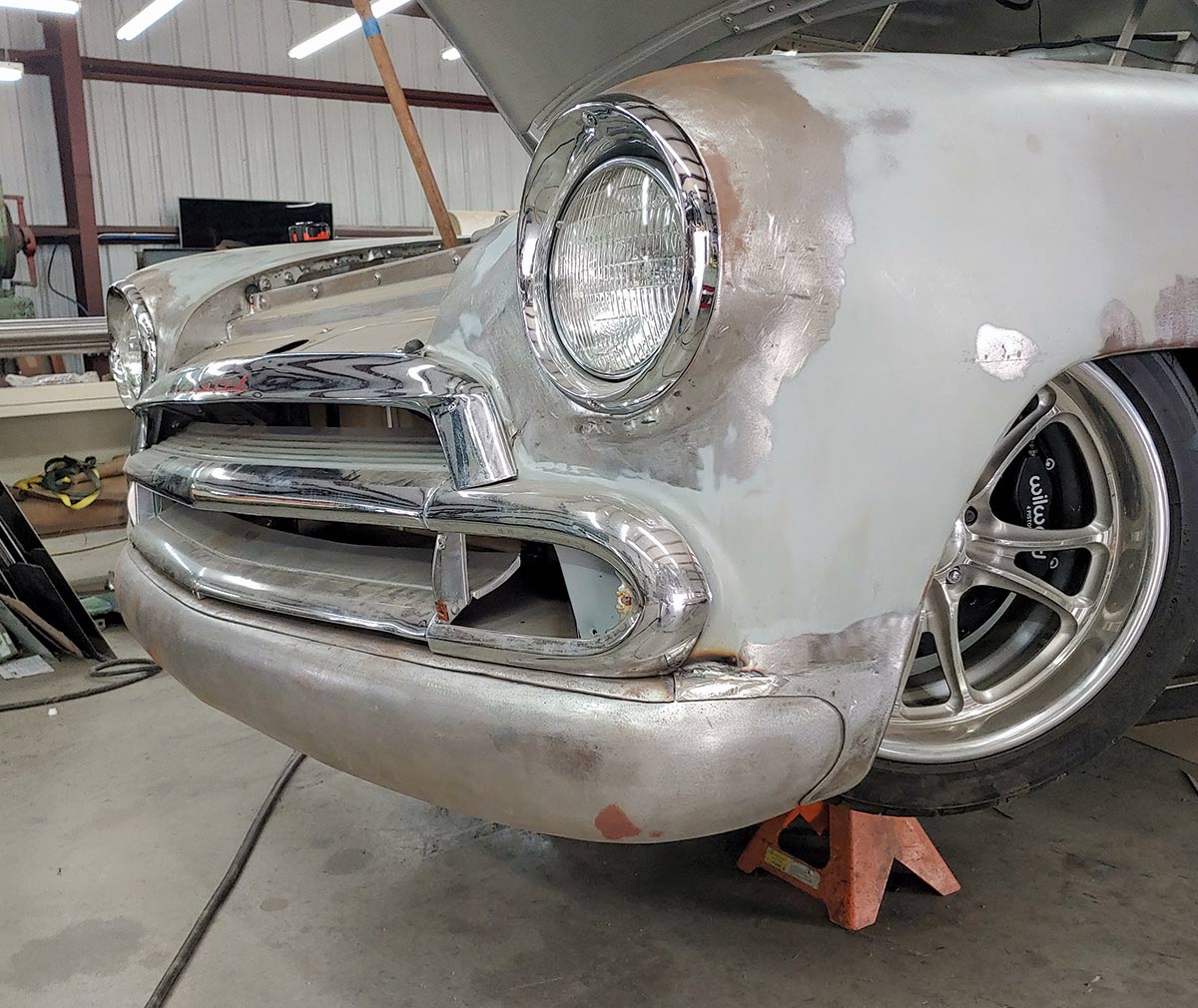


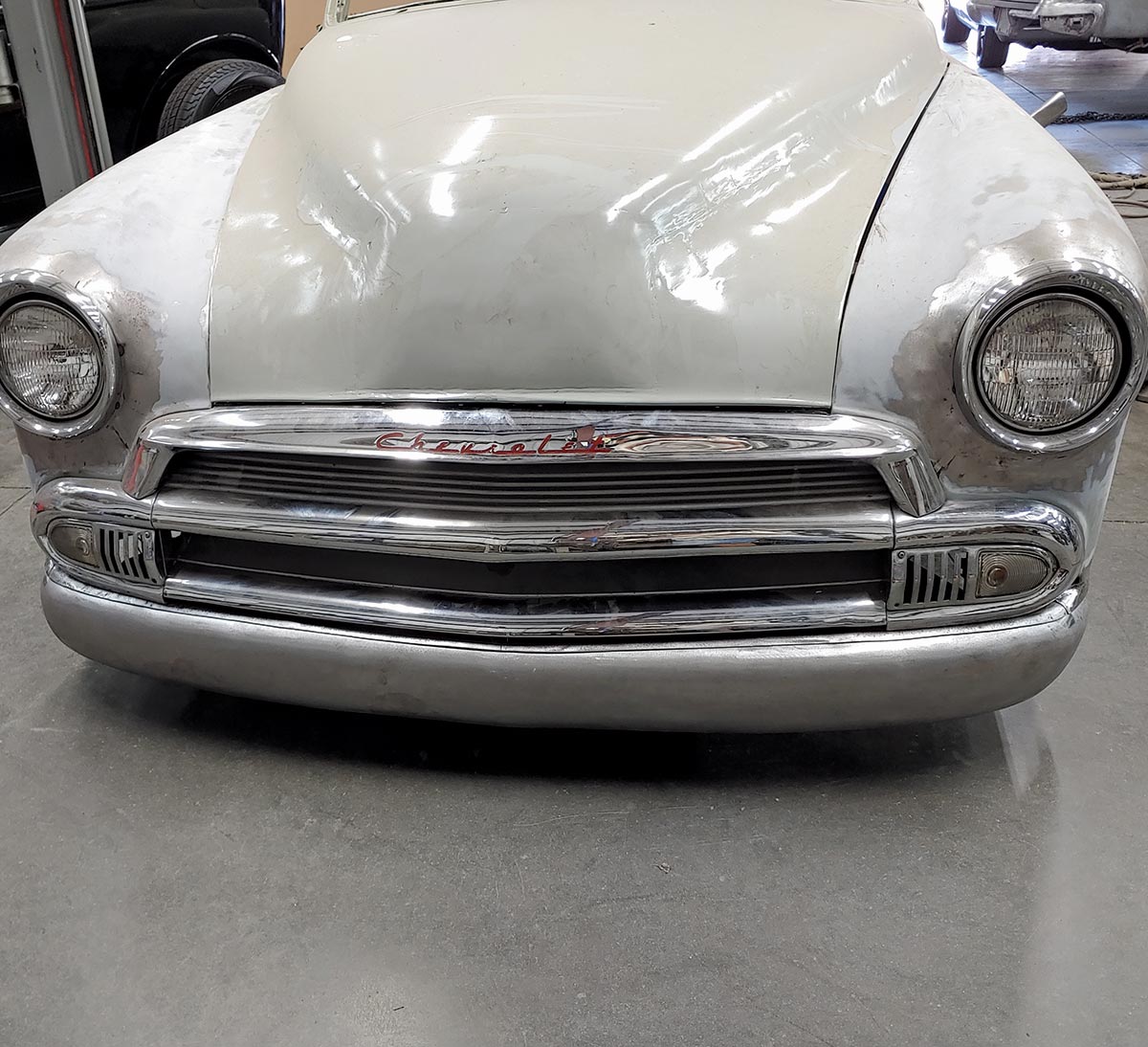


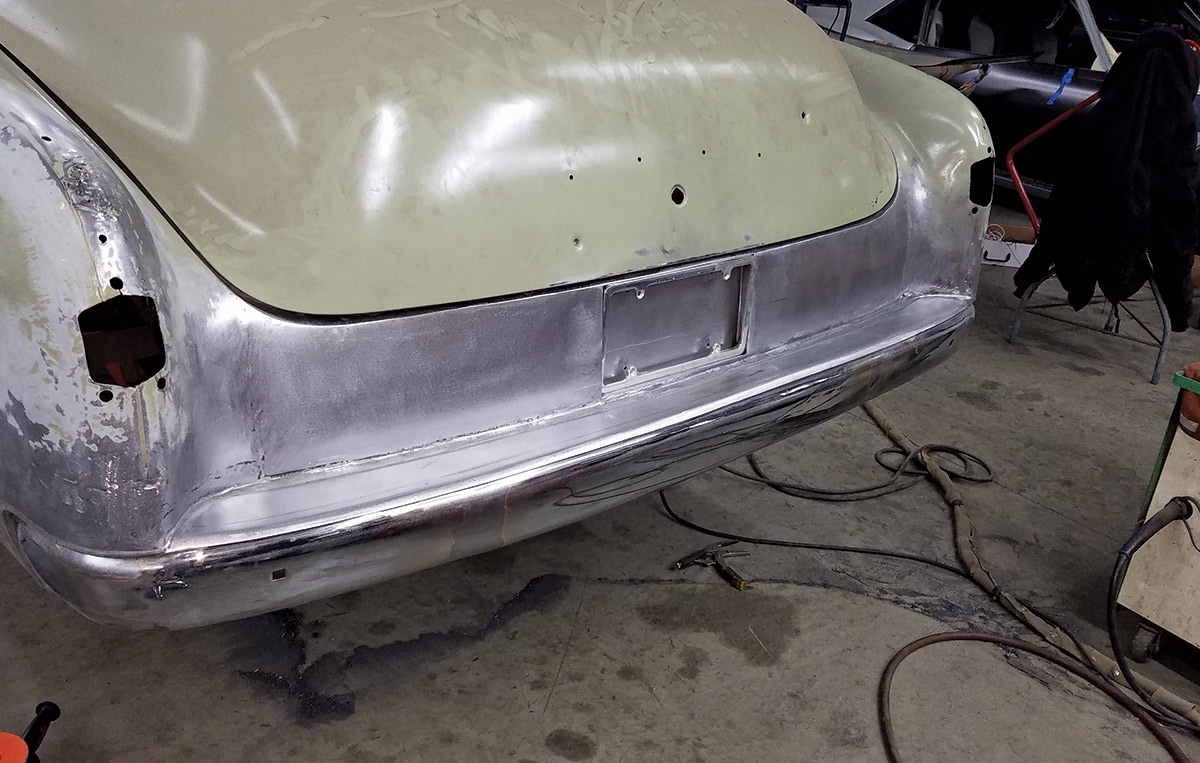

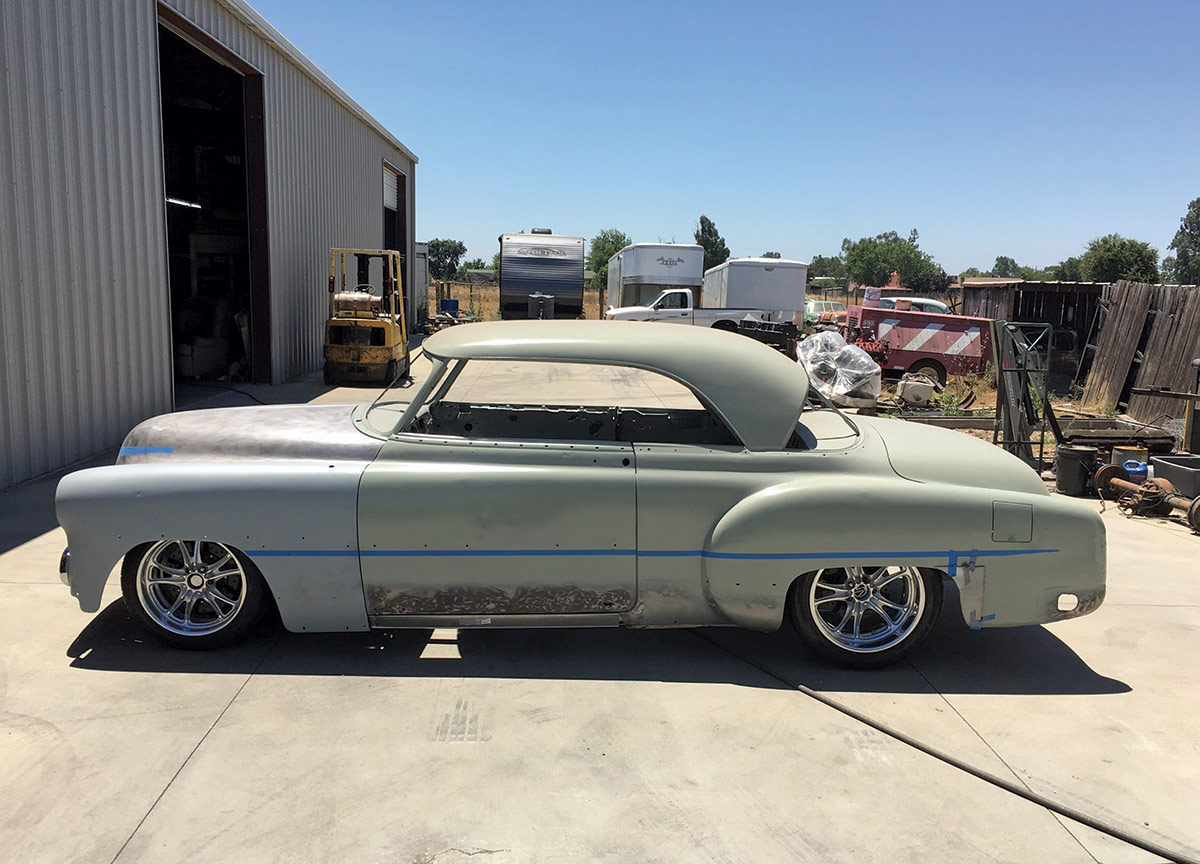
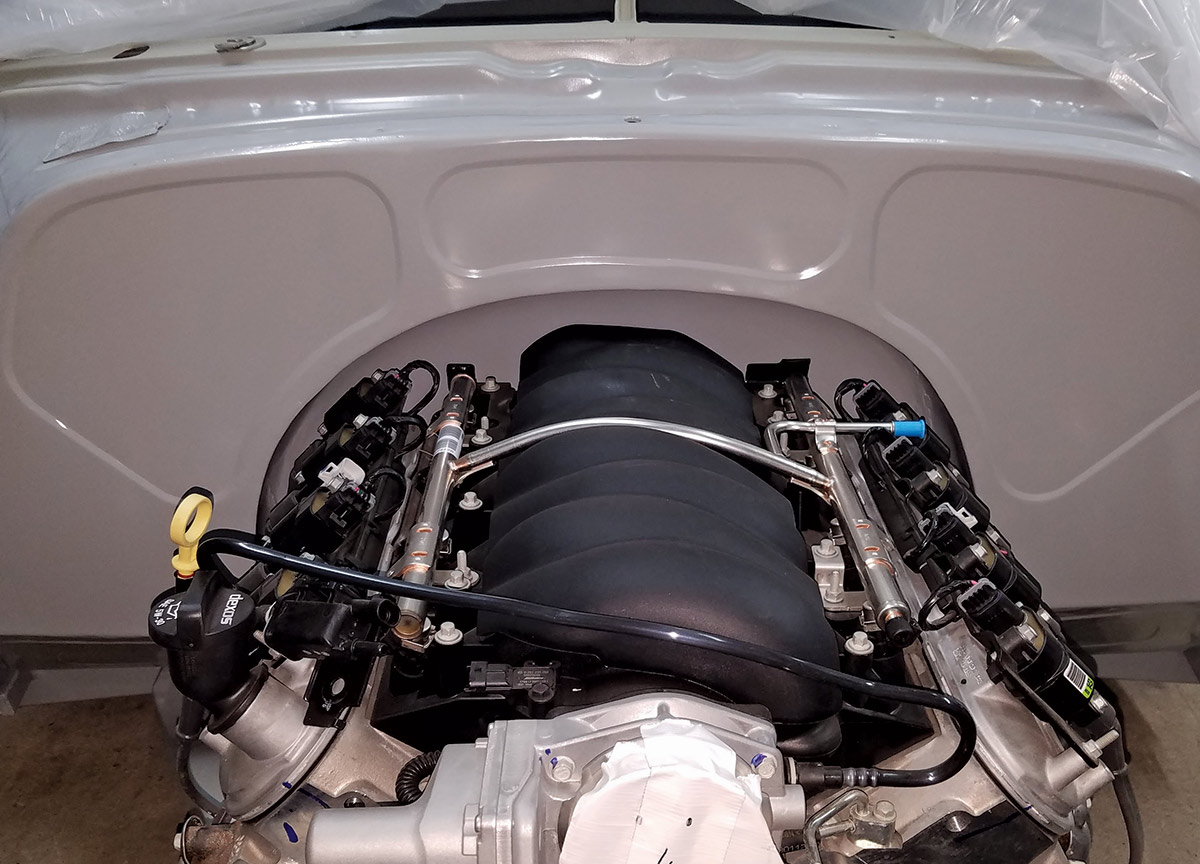


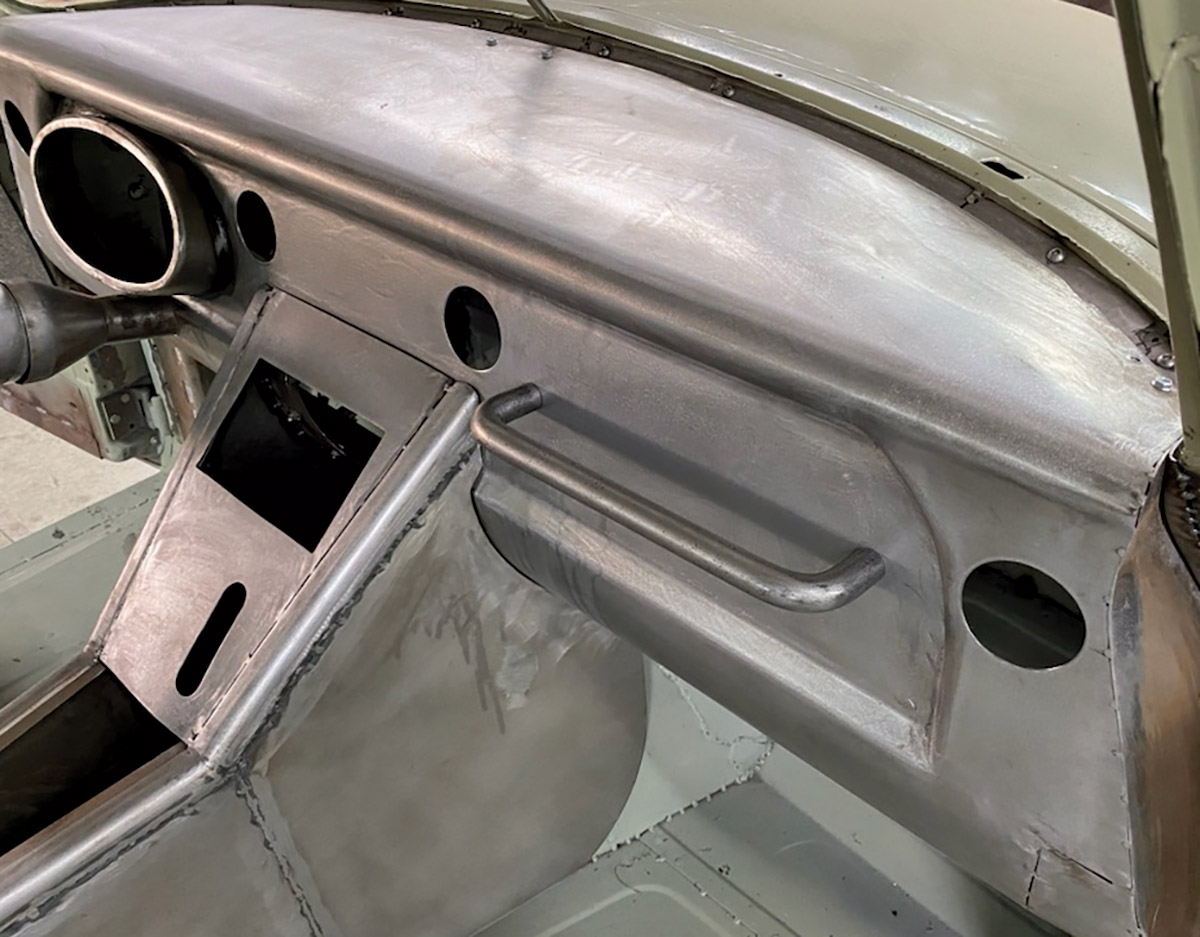
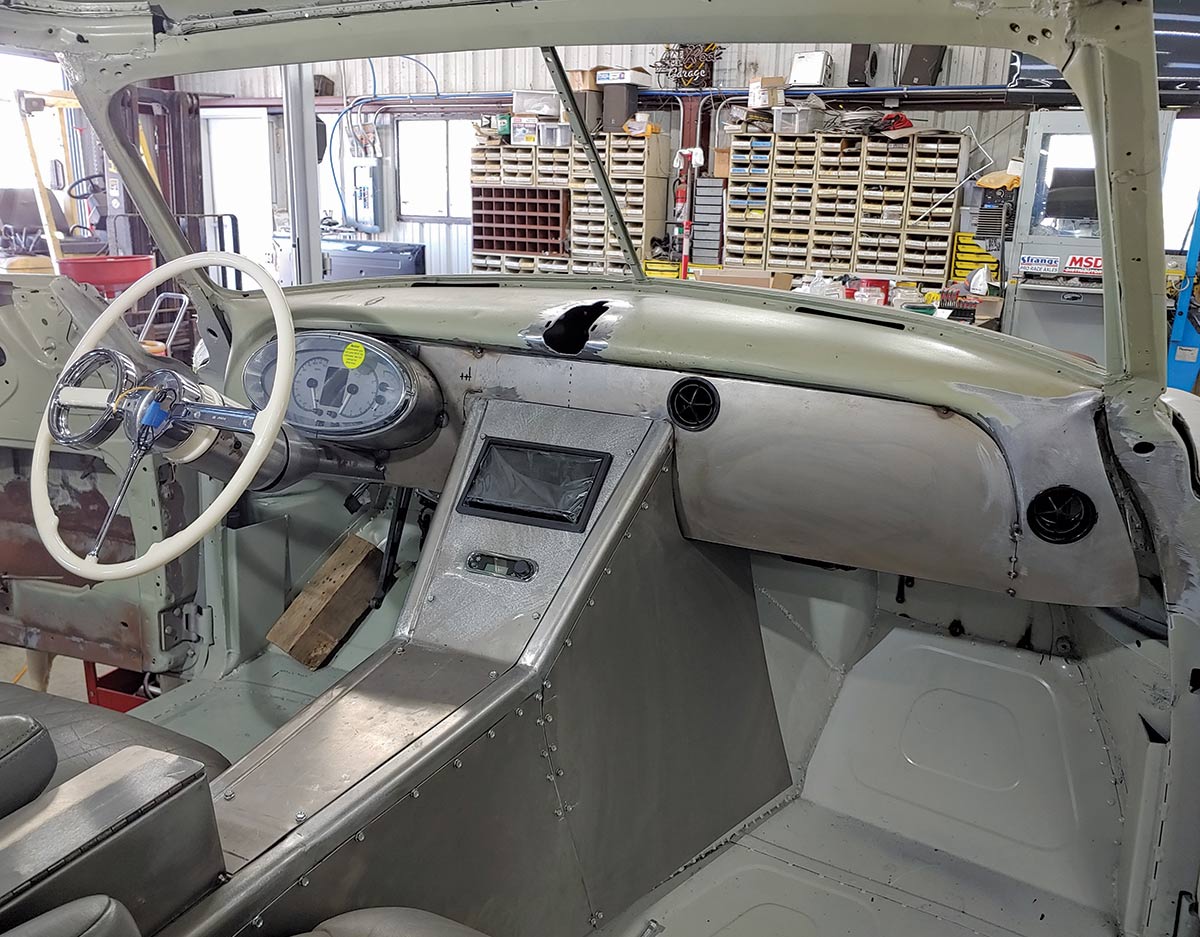
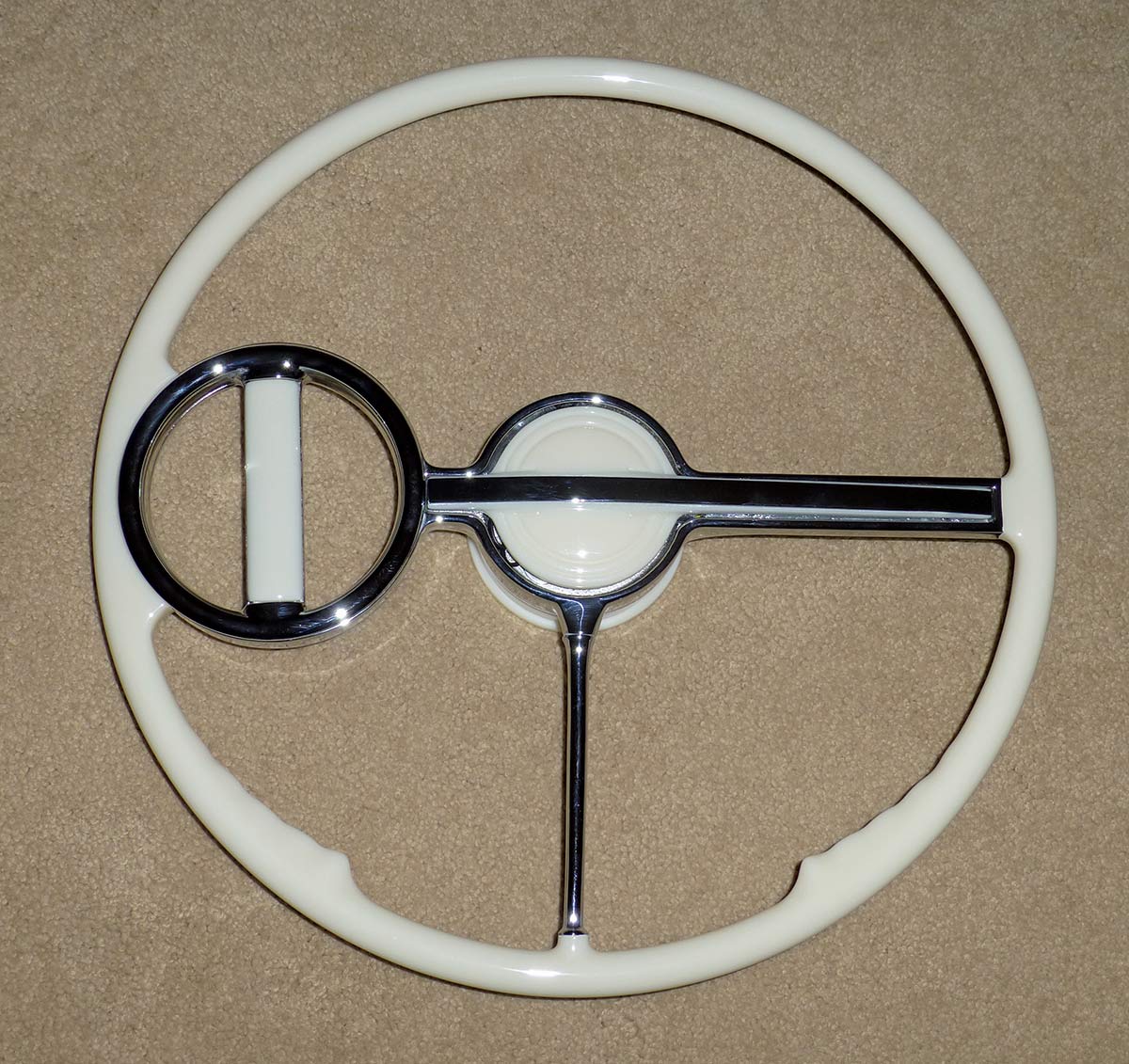
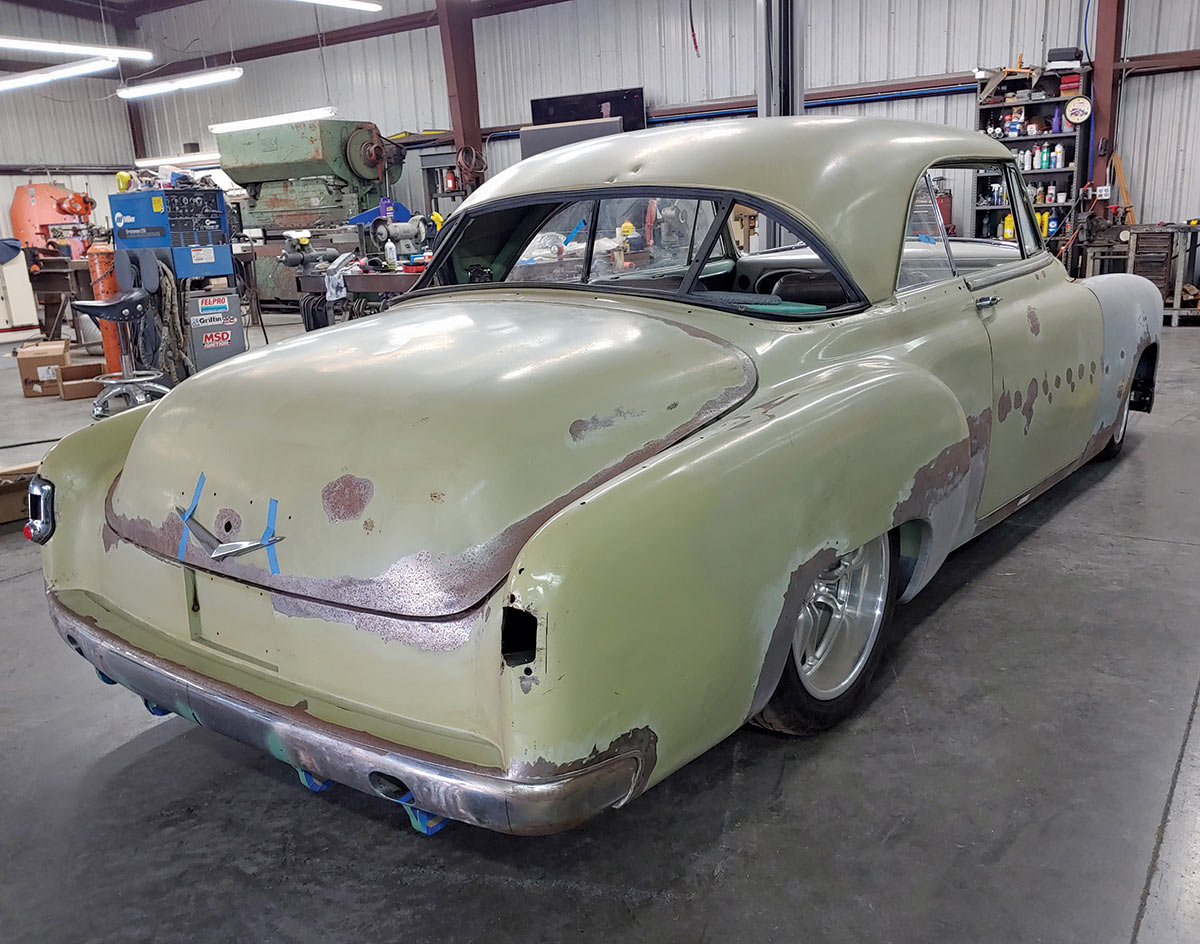

(209) 748-2560
VOLUME 4 • ISSUE 35 • 2023